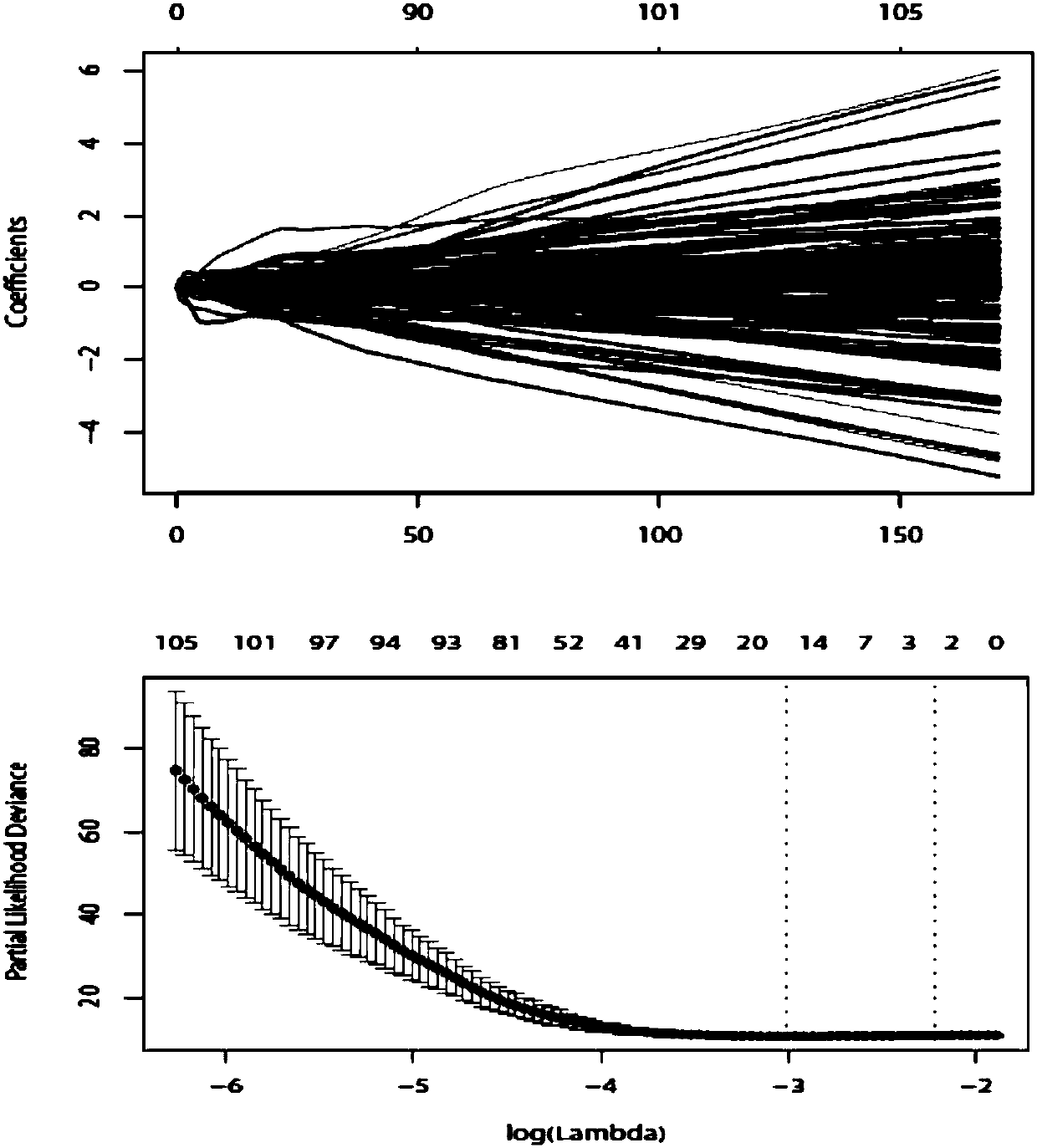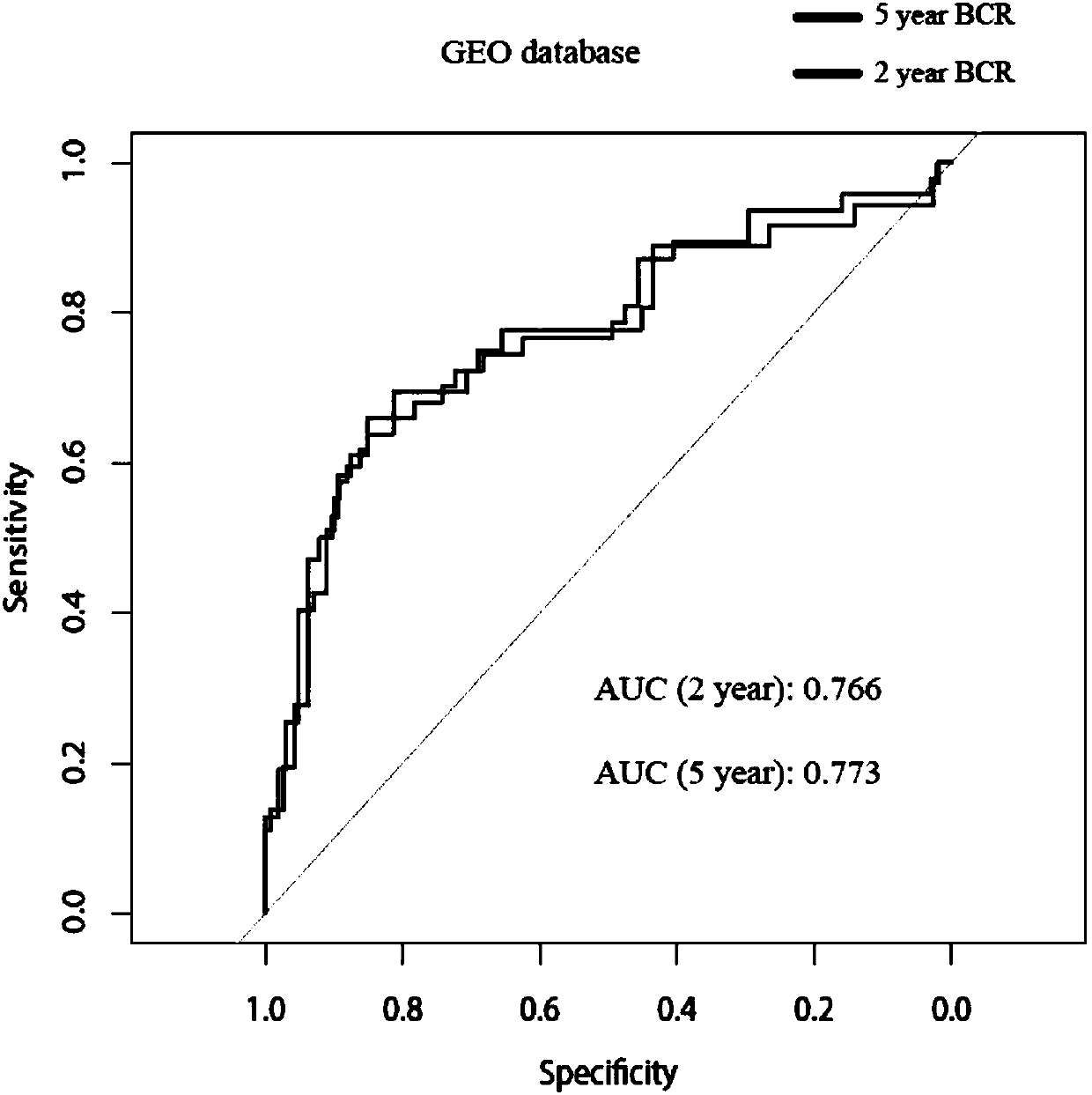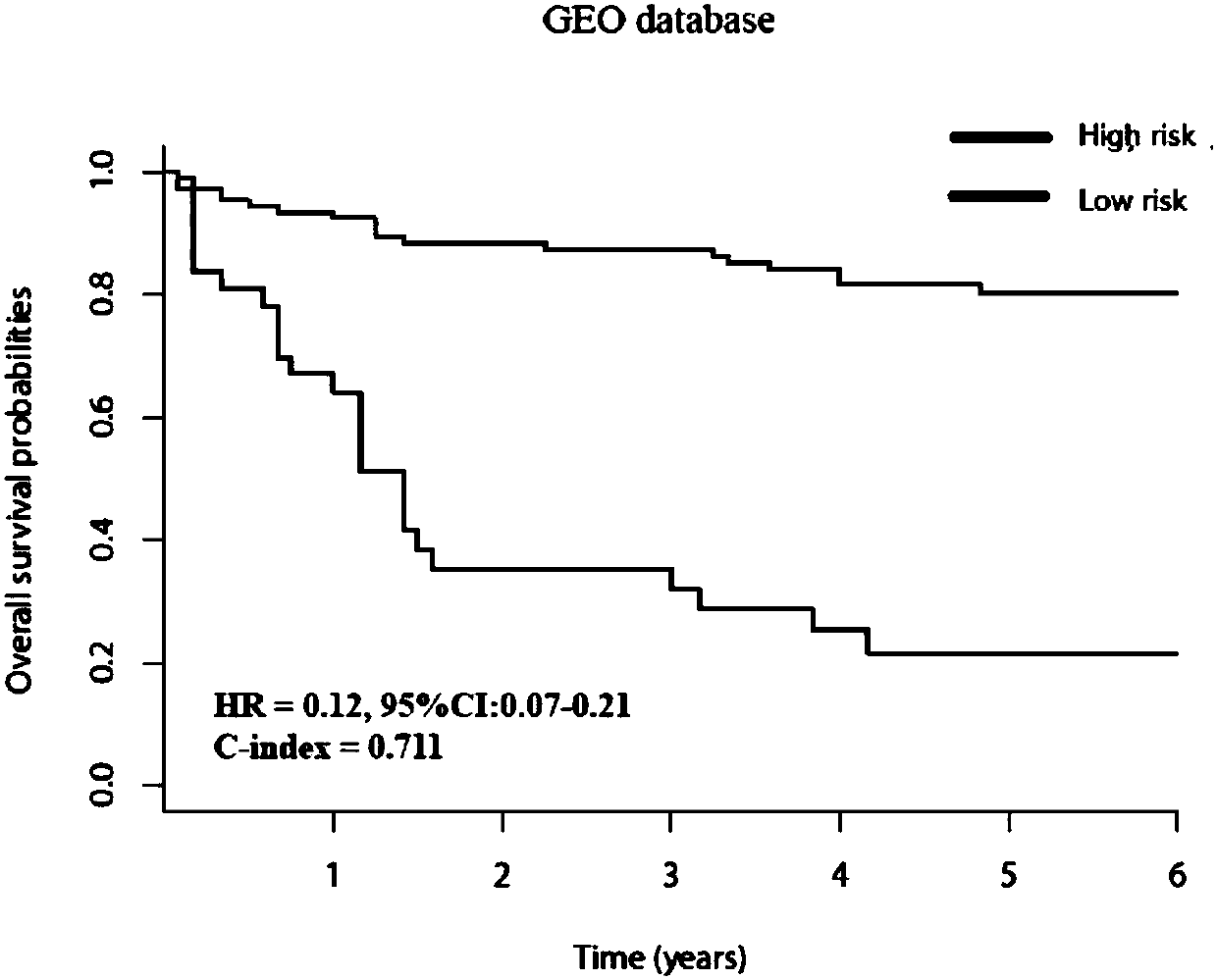Polygene detection kit for cancer prognosis
A detection kit and detection reagent technology, applied in the field of medicine and health, can solve the problems that the prediction effect needs to be enhanced, the evaluation of prostate cancer is limited, etc., and achieve the effect of high prediction value
- Summary
- Abstract
- Description
- Claims
- Application Information
AI Technical Summary
Problems solved by technology
Method used
Image
Examples
Embodiment 1
[0035] Example 1 Establishment of Prostate Cancer Recurrence and / or Survival Consequence or Prognosis Assessment Model
[0036] By searching and screening 149 prostate cancer patients from the Gene Expression Omnibus (GEO) database, the corresponding microarray data were extracted. According to the research progress of prostate adenocarcinoma, 522 potential target genes were identified, and the Lasso Cox regression model was used to analyze the mRNAs closely related to the biochemical recurrence of these patients. Finally, a gene decision model based on 15 mRNAs was determined and constructed (see figure 1 ). And according to the risk of the decision model, the following scoring formula was used to obtain the risk value, and the patients were divided into high-risk group and low-risk group for biochemical recurrence after prostate cancer surgery.
[0037] Risk value=(0.4237×MCM2 expression level)+(0.1915×GATM expression level)+(-0.1810×PTGDS expression level)+(0.2629×ETV1 ex...
Embodiment 2
[0040] Example 2 Multigene Kit for Prostate Cancer Prognosis
[0041] The multigene kit used for the prognosis of prostate cancer in this embodiment includes:
[0042] Total RNA extraction reagent Trizol;
[0043] Chloroform (chloroform);
[0044] isoamyl alcohol;
[0046] DEPC water (DD1005);
[0047] Ethylene glycol pyrophosphate (DEPC);
[0048] Anti-RNase solution (RNaseZap);
[0049] Reverse transcription kit;
[0050] iQ SYBR Green Supermix;
[0051] The polynucleotide primer whose sequence is SEQ ID NO: 1-30.
[0052] After using the kit to perform real-time quantitative PCR (qRT-PCR) detection of each gene, the initial data result is represented by the Ct value (cycle threshold), that is, the number of cycles required for the fluorescent signal in each reaction system to reach the set threshold. The Ct value of each sample has a linear relationship with the logarithm of the initial copy number of the sample, and the higher the initi...
Embodiment 3
[0055] Example 3 Preparation and pretreatment of sample RNA
[0056] (1) For the tissue RNA extraction experiment, soak the tip and tweezers in DEPC water overnight, then sterilize under high temperature and high pressure, pre-cool the centrifuge at 4°C, and wipe the test bench, pipette gun, gloves, etc. with anti-RNase Zap.
[0057] (2) Tissue homogenate Take 50-100mg tissue sample, mince it slightly with a sterile scalpel blade, put it into a 1.5mL EP tube, add 500μL Trizol reagent, fully homogenize with an electric tissue grinder, and then add 500μL Trizol reagent .
[0058] (3) Add 0.2mL chloroform to every 1mL Trizol reagent homogenate sample, and tightly cap the EP tube. Shake vigorously for 15 seconds, and place at room temperature for 3 minutes. Centrifuge at 12,000 rpm at 4°C for 15 minutes (pre-cool the centrifuge). After centrifugation, the mixed system will be divided into a colorless aqueous phase in the upper layer, a protein in the middle layer and a red phen...
PUM
 Login to View More
Login to View More Abstract
Description
Claims
Application Information
 Login to View More
Login to View More - R&D
- Intellectual Property
- Life Sciences
- Materials
- Tech Scout
- Unparalleled Data Quality
- Higher Quality Content
- 60% Fewer Hallucinations
Browse by: Latest US Patents, China's latest patents, Technical Efficacy Thesaurus, Application Domain, Technology Topic, Popular Technical Reports.
© 2025 PatSnap. All rights reserved.Legal|Privacy policy|Modern Slavery Act Transparency Statement|Sitemap|About US| Contact US: help@patsnap.com



